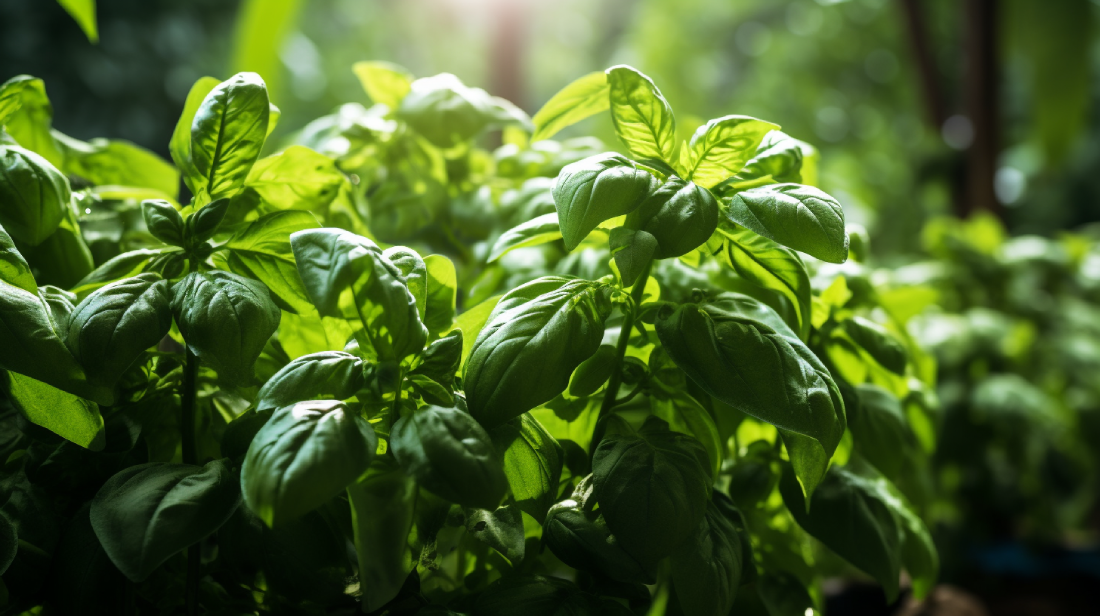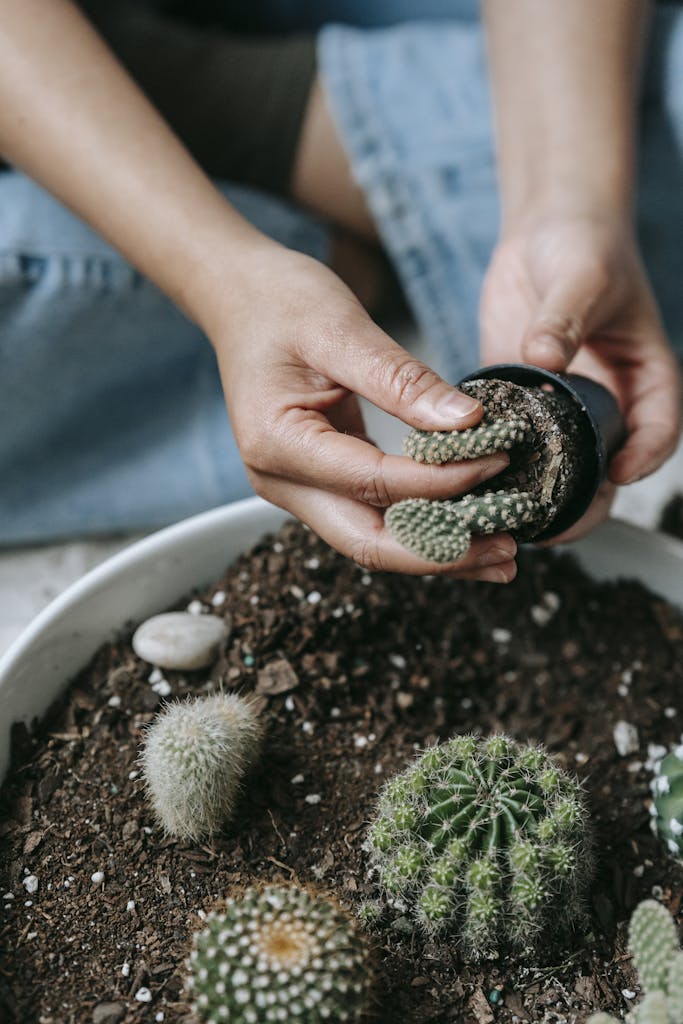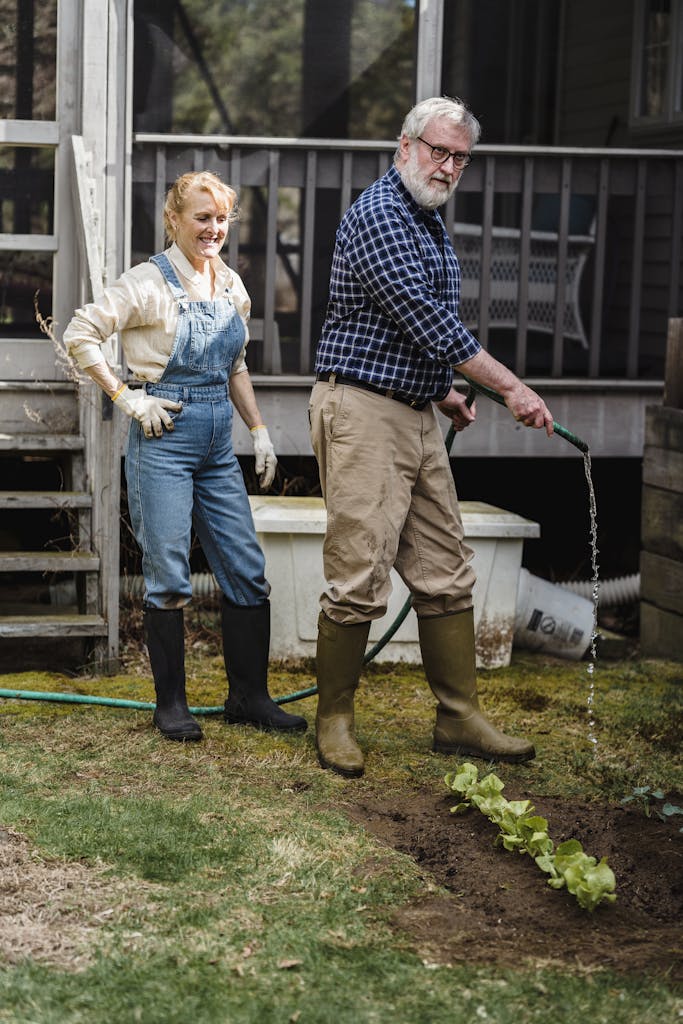As a passionate enthusiast of plants, I’ve begun to express concern over my basil plant, which has recently shown wilted signs. I view this as a prompt to delve deeper, identify the underlying reasons and search for appropriate remedies. In my research, I’ve found that overwatering and underwatering are common pepper plant wilting causes. Upon closer inspection, I realized that my basil plant may be suffering from overwatering, as the soil feels consistently moist. To address this issue, I’ve decided to adjust my watering schedule and make sure the soil has proper drainage to prevent future wilt.
Whether it’s about tweaking watering routines, adjusting light exposure, or rethinking soil choices, I am determined to bring my basil back to health.
Join me on this journey as we navigate the challenges of plant care and prevent future wilting. Let’s master this together!”
Key Takeaways
- Basil plant wilting can be caused by overwatering or underwatering, extreme temperatures, pests and diseases, nutrient deficiency, or improper soil drainage.
- Signs of basil plant stress include drooping leaves, yellow leaves, brown spots on leaves, stunted growth, and wilting even during non-extreme temperatures.
- Differentiating between healthy droop and unhealthy wilt is important. Healthy droop is when leaves perk up in cooler temperatures or after watering, while unhealthy wilt is when leaves continue to wilt despite temperature changes or watering.
- Proper watering balance and lighting conditions, including 6-8 hours of sunlight per day or supplemental grow lights, are crucial for basil plant health.
Understanding Why My Basil Plant is Wilting: Common Reasons and Symptoms
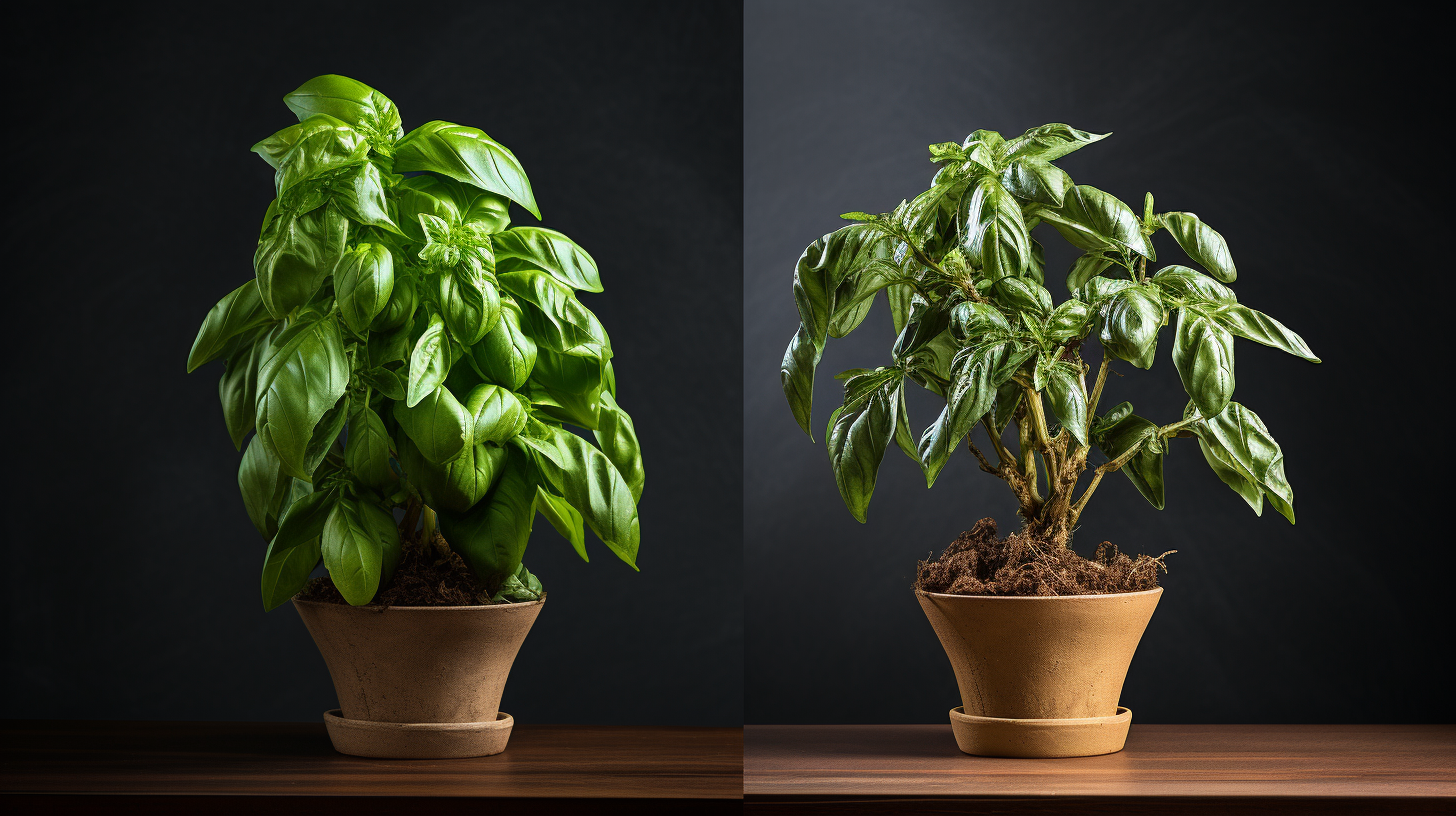
I’ve noticed my basil plant wilting, which has worried me. I’m determined to understand why this is happening and how to identify the signs of stress in my plant.
Is it a natural sag or an unhealthy wilt? Let’s find out.
Recognizing and Identifying Causes of Basil Leaves Wilting
It’s crucial for me to understand what’s causing my basil wilt so I can address the issue effectively. By recognizing signs and identifying causes, I can implement the necessary changes to restore my basil plant to health.
Overwatering or underwatering
Seeing my basil drowning in excess water or parching in dry soil is heartbreaking. I strive to find the right balance to ensure my basil thrives.
Extreme temperatures
It’s distressing when my basil suffers in temperature extremes. I aim to provide a comfortable environment for it to flourish.
Pests and diseases
Witnessing my basil attacked by pests or infected with diseases is disheartening. I commit to protecting it with organic and safe solutions.
Mastering these challenges brings me closer to becoming a successful gardener.
Telling Signs Your Basil Plant is Drooping and Under Stress
Seeing sagging leaves and other signs of stress indicates a problem I need to address in my garden. When my basil plant is wilting, I know immediate action is necessary to save it.
Here are the top three signs I look for:
| Sign | Description | Remedy |
| Drooping leaves | Basil leaves that are wilting or curling under. | Check for overwatering or underwatering. |
| Yellow leaves | Leaves are turning yellow, which is not their natural color. | Examine for nutrient deficiency or disease. |
| Brown spots | Brown or black spots appear on the leaves. | Look for fungal infections or pests. |
Mastering these signs and their remedies allows me to quickly identify and address the problem, greatly increasing my basil plant’s chance of survival.
Differentiating Natural Droop from Unhealthy Wilt in Your Basil Plant
There’s a distinct difference between a healthy basil plant droop and an unhealthy wilt in those green leaves, which I’m learning to identify for better care of my garden. I’m realizing that understanding these subtle cues is much like learning a new language – the language of plants.
Healthy droop:
The leaves of my basil plant might sag a little during the heat of the day, but they perk right back up in the cooler evening.
This is a natural response, not a cause for alarm.
Unhealthy wilt:
If the leaves are wilting and not recovering with cooler temperatures or watering, it’s a sign of stress.
This could be due to overwatering, underwatering, or disease.
In decoding these signs, I’m becoming a better gardener, more attuned to my plants’ needs. It’s a journey of growth for both my garden and me.
The Crucial Role of Water and Lighting in Basil Plant Health
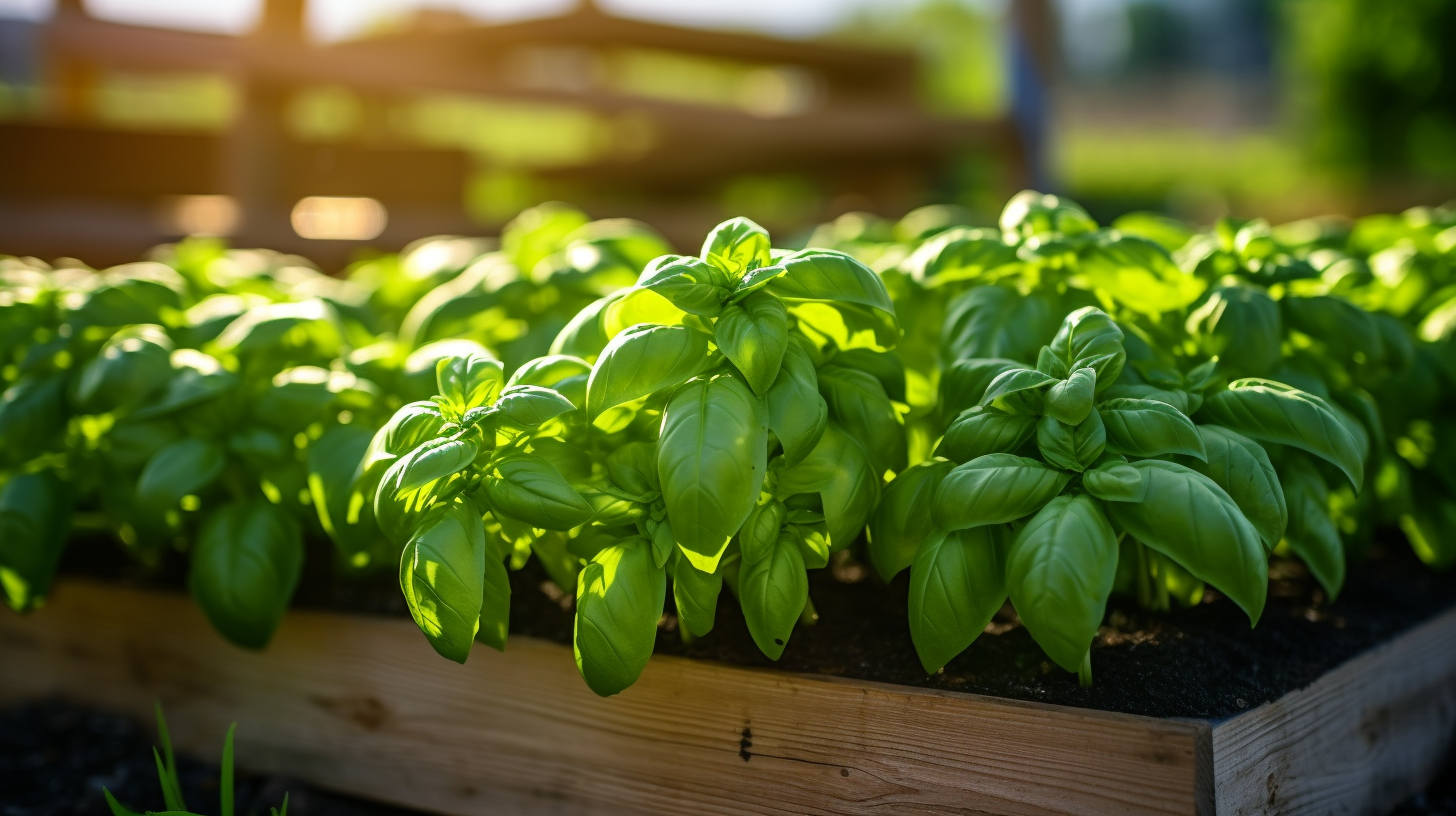
I’ve come to realize that the health of my basil plant hinges on two vital factors: water and light.
I’ve noticed that when my plant’s thirst is quenched with the right amount of water and basks in suitable lighting, it thrives beautifully.
Let’s delve into how I determine the proper watering and lighting conditions to prevent my basil leaves from wilting and boost their vitality.
Determining the Proper Amount of Water for Your Basil Plant
I must figure out just how much water my basil plant truly needs to thrive. I’ve researched extensively, and it seems there’s a delicate balance to strike. Too little, and my plant wilts. Too much, and I risk root rot.
- My basil plant’s health is a priority.
- When it thrives, I feel a sense of accomplishment.
- When it struggles, I feel frustrated and concerned.
- It’s a living thing, relying on my care.
- Its well-being affects me emotionally.
- Its dependency evokes a sense of responsibility.
Finding the right balance is a challenge. It requires attentiveness and commitment. The reward is a flourishing plant.
This journey toward mastery is filled with trials, but it’s worth it for the joy my healthy basil plant brings me.
The Impact of Lighting Conditions on Your Basil Plant’s Vitality
Now, I’m focusing on how lighting conditions can affect the vitality of the green little wonder in my kitchen.
A crucial aspect of basil care is its exposure to light. It’s essential to understand that this herb thrives in full sun, requiring six to eight hours of sunlight each day. Without this, the basil’s growth can be stunted, and its leaves may begin to wilt.
But remember, too much direct sunlight can be harmful. Ideally, place your basil plant in a south-facing window where it’ll receive adequate but not excessive light.
You can supplement natural light with fluorescent grow lights if it is limited. Adjusting the lighting conditions can dramatically improve the health and vitality of your basil plant.
Preventing Basil Leaves from Wilting Through Optimized Watering and Lighting
I’m looking into preventing the leaves from wilting by optimizing both the watering schedule and lighting conditions. It’s clear that these two factors are vital to the health and vitality of my basil plant.
I’ve come to learn that:
- The right watering schedule can make a world of difference. Overwatering or underwatering can lead to wilting.
- Finding the right balance is key. It’s about understanding my plant’s needs and responding accordingly.
- The correct lighting conditions are equally important.
- Too much light can cause wilting, while too little can stunt growth.
At the heart of it all, it’s about respecting nature and understanding that every plant has unique needs. By mastering these, I can prevent my basil leaves from drooping and ensure my plant thrives.
Indoor vs Outdoor Basil: Navigating Challenges of Different Growing Environments
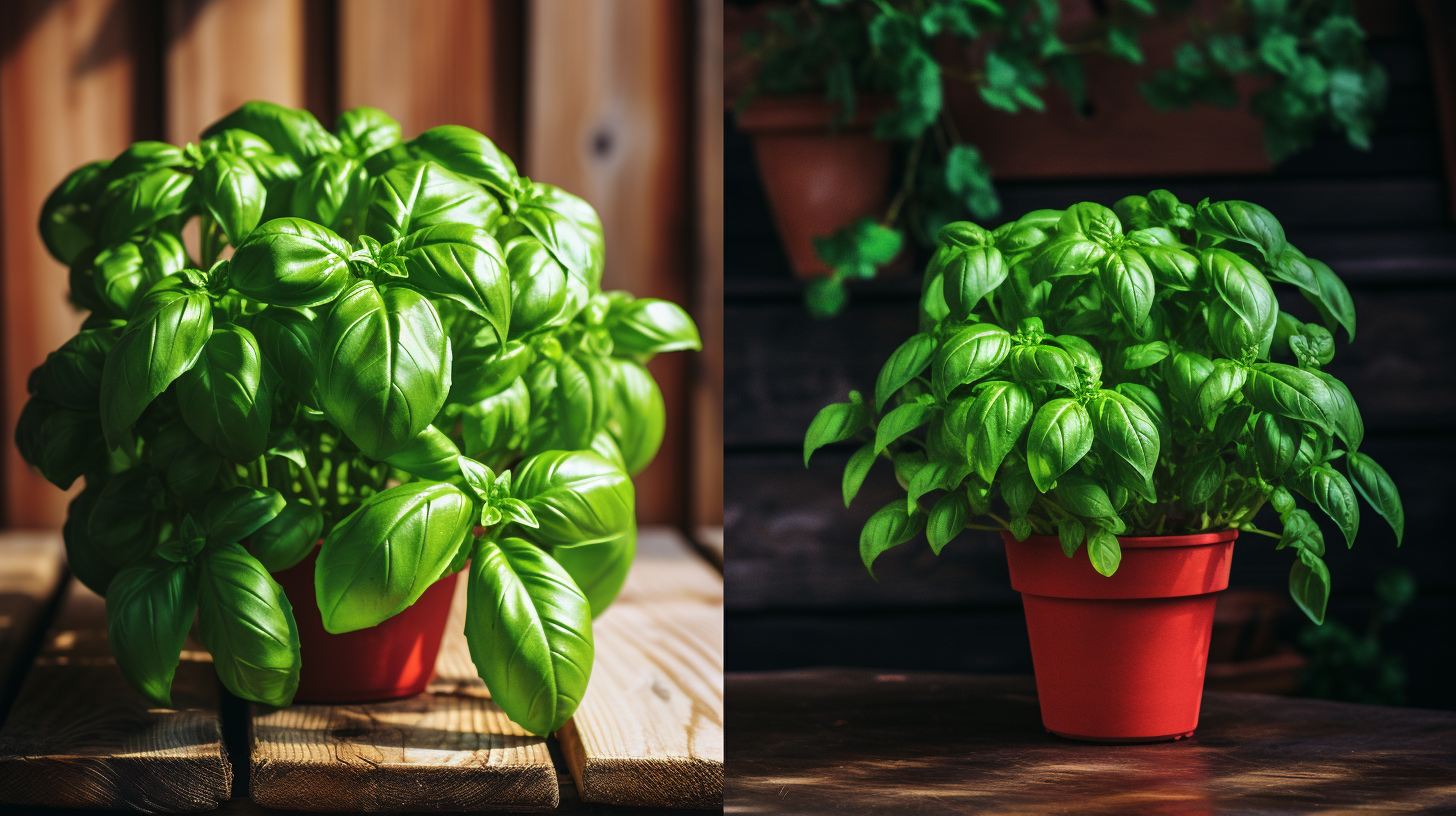
Now, let’s dive into the pros and cons of growing basil indoors versus outdoors.
I’ve faced different challenges in both settings, yet each has unique rewards.
From dealing with limited natural elements indoors to tackling common problems outdoors and even transplanting your basil – I’ll guide you through it all.
Ensuring a Thriving Indoor Basil Despite Limited Natural Elements
Despite limited natural elements, I’ve found ways to ensure my indoor basil plant thrives. I’ve discovered that it’s not about replicating the outdoors but adaptability and making the most of what’s available. Once you know what it needs, you’ll be surprised at how resilient basil can be.
Watering: Less is often more. Overwatering is a common mistake. I’ve learned to:
- Wait until the top soil is dry before watering again.
- Not let the plant sit in water.
Light: Basil loves a lot of sunlight. I’ve found that:
- A south-facing window works best.
- Supplemental grow lights can make a big difference.
Pruning: Regular pruning promotes growth. It’s important to:
- Always prune above a pair of leaves.
- Never remove more than a third of the plant at once.
Tackling Common Problems When Growing Basil Outdoors
While it’s true that growing herbs outdoors presents a whole new set of challenges, I’ve found that with the right strategies, you can easily tackle common problems and keep your garden thriving. The key is to balance watering and sunlight exposure while keeping a vigilant eye for pests and diseases.
Here’s a quick reference guide for common basil issues:
| Problem | Solution |
| Overwatering | Water only when soil is dry to touch |
| Insufficient Sunlight | Ensure plant gets 6-8 hours of direct sunlight |
| Pests/Diseases | Use organic pesticides, keep plant area clean |
Transplanting Your Basil: When, Why, and How
I’ve got to tell you that transplanting your herbs can be a game changer regarding their growth and productivity. Here’s how:
Choose the right time:
Transplanting is best done in the early morning or late evening to avoid the sun’s harshness.
Prep the new space:
Use nutrient-rich soil and ensure it’s well-drained.
Handle with care:
Be gentle when removing your basil from its current pot. You don’t want to damage those precious roots!
It’s not just about the act but the anticipation, nurturing, and satisfaction of seeing your basil thrive. It’s a dance of patience and attentiveness. And when you master this dance, you’ll taste the sweetest basil leaves in your homemade pesto.
The Right Soil and Pot: An Often Overlooked Aspect of Basil Health
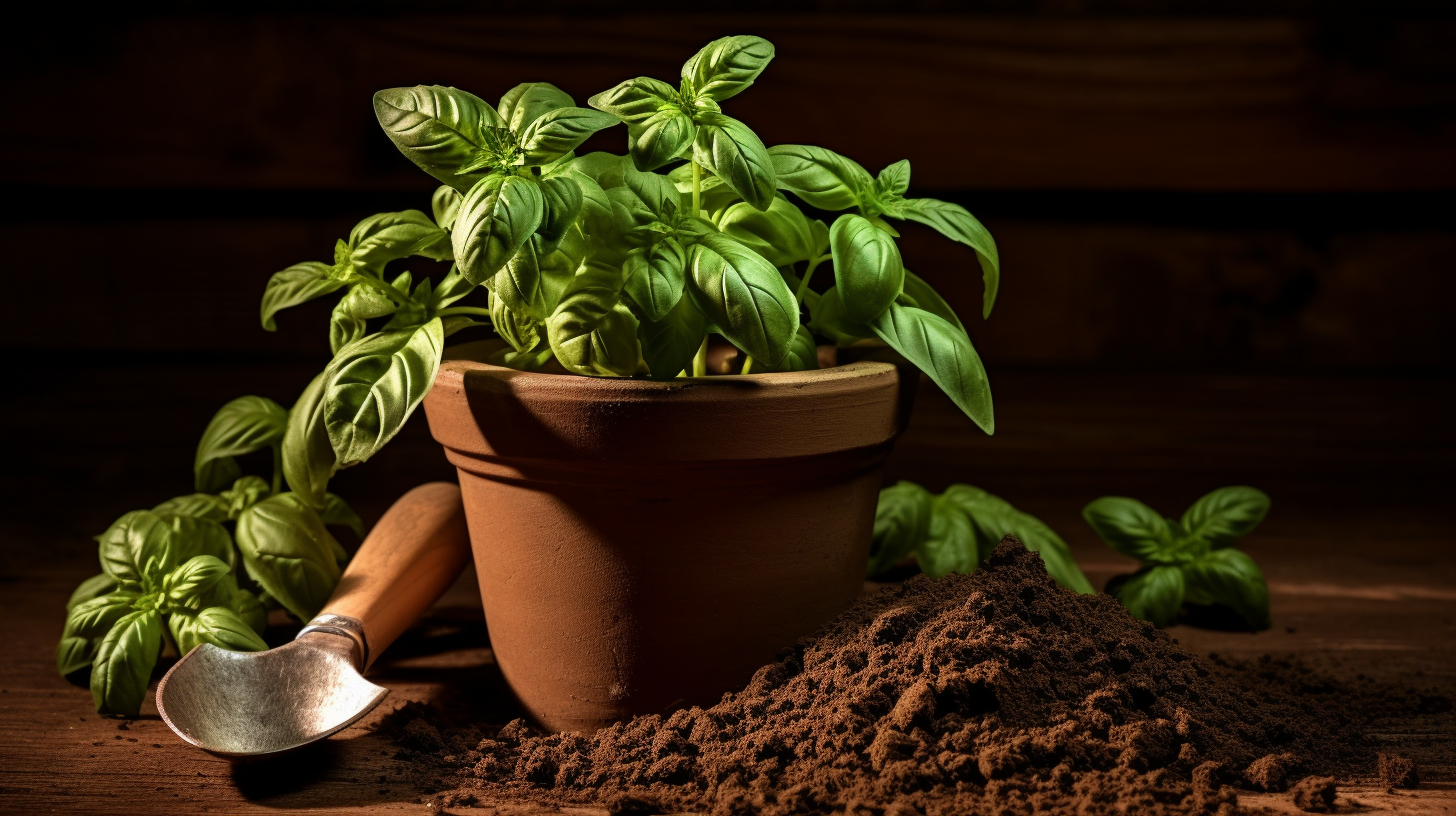
Now, let’s delve into an area we often overlook – choosing the right soil and pot for our basil.
I’ve found that these factors can have a huge impact on the basil’s health.
All About Selecting the Ideal Pot for Your Basil Plant
Choosing the right pot for my basil plant isn’t as easy as it sounds, as it plays a crucial role in its overall health and growth. A wrong choice can lead to soggy roots or even wilting. What do I consider?
Material:
- Plastic pots are lightweight and can keep the soil moist but don’t breathe.
- Terracotta pots are breathable but can dry out quickly.
Size:
- Too small, and the roots can’t spread.
- Too big, and the soil may stay too damp.
Drainage:
- Without adequate holes, water might pool and cause root rot.
Understanding the Soil Requirements of a Healthy Basil Plant
Just as getting the right pot is critical, it’s equally important for me to understand the soil needs of a healthy basil.
I’ve learned that basil thrives in well-draining, nutrient-rich soil with a neutral to slightly acidic pH. I can’t just scoop up any old dirt and expect success.
I must be mindful of the soil’s consistency, ensuring it’s loose enough for water to drain yet dense enough to hold the vital nutrients my basil requires. I also add organic matter like compost or worm castings to enrich the soil.
Regular soil pH testing is also crucial, keeping it in the 6.0 to 7.5 range. It’s a delicate balance, but mastering the soil is key to preventing a wilting basil plant.
Basil Root Health 101: Prevent Wilt with Proper Container Choice and Soil Management
In addition to understanding the soil requirements, I’ve got to pay close attention to root health and proper container selection to prevent any sagging leaves. It’s not just about the soil; it’s about the whole plant’s environment.
I need to consider:
The size and material of the container:
Too small, and the roots won’t have room to grow, causing the plant to wilt.
The wrong material could lead to poor drainage or root rot.
The health of the roots:
Healthy roots mean a healthy plant. If the roots are brown or mushy, it’s a sign of overwatering.
The type of soil:
Basil prefers well-draining soil. Waterlogged soil can lead to root rot.
Mastering these aspects will rescue my wilting basil and evoke a sense of accomplishment in me.
Discover the transformative power of calcium in revitalizing your wilting basil plants – learn the secrets of achieving a healthier garden by enhancing soil with calcium!
What is the Relationship Between Tomato Plant Spacing and Basil Plant Health?
Tomato plant spacing plays a vital role in the overall health of basil plants. Properly spacing tomato plants helps prevent overcrowding and allows for better airflow and sunlight penetration, reducing the risk of diseases like powdery mildew. Following a tomato plant spacing optimization guide ensures that basil plants receive adequate resources, minimizing competition and improving their overall health and productivity.
Implementing Advanced Care Strategies to Prevent Future Wilting

Now that we’ve tackled the basics with the right soil and pot, it’s time to step up our game with advanced care strategies.
I will delve into how regular pruning, disease, pest prevention, and effective nutrient provision can prevent future wilting.
Let’s dive into these strategies to keep our basil plant thriving.
Regular Pruning: A Simple Step to Keep Your Basil Plant Thriving
I’ve found that regular pruning is a simple step to keep my basil plant thriving, even when it starts to wilt. It’s rewarding to see those lush green leaves bounce back with vigor and life.
The joy of seeing a wilting plant spring back to life:
- It’s like a metaphor for resilience. Life finds a way, even against the odds.
- The satisfaction of knowing you helped nurture it back to health:
- Like a proud parent, you’ve helped guide this living thing back into vitality.
- The anticipation of the flavors and fragrances that await:
- Every leaf promises a delicious meal, a sensory experience waiting to be unlocked.
Mastering the art of regular pruning empowers you to keep your basil plant in peak condition, no matter the challenges.
Shielding Your Basil Plant from Common Diseases and Pests
Keeping those pesky diseases and pests at bay is another crucial part of ensuring the health of leafy greens, and it’s not as hard as it sounds. I’ve found that familiarizing myself with the common issues affecting basil plants is a good place to start. Then, I can actively take steps to prevent them.
Here’s a simple table to help you understand:
| Disease/Pest | Symptom | Prevention |
| Downy Mildew | Yellow leaves, fuzzy undersides | Use disease-resistant varieties, space plants for airflow |
| Aphids | Yellow, curled leaves, sticky residue | Use insecticidal soaps, introduce predators like ladybugs |
| Fusarium Wilt | Wilted leaves, brown stems | Use disease-resistant varieties, rotate crops |
Understanding these basics has helped me keep my basil plants healthy and vibrant. It’s a proactive approach that saves me a lot of stress down the line.
Providing Nutrients for a High-Yielding, Vibrant Basil Plant
Feeding those leafy greens with the right nutrients is essential for a bountiful harvest, and it’s easier than you might think. By providing my basil with the right blend of nutrients, I’ve managed to cultivate a plant that’s vibrant, full of life, and a joy to harvest.
The thrill of seeing your plant flourish is incomparable. It’s like:
- Watching a child grow and thrive under your care.
- Experiencing the satisfaction of a job well done.
- Feeling the joy of reaping what you’ve sown literally and metaphorically.
I’ve found that mastery over my basil’s nutrient needs didn’t just improve my harvest but also imbued my journey with a sense of accomplishment and fulfillment. It’s a journey I’d recommend to anyone seeking mastery in their gardening pursuits.
Frequently Asked Questions
How Long Does It Typically Take for a Wilting Basil Plant to Recover?
It’s tough to give an exact timeline. Still, typically, with proper care, a wilting basil plant should start to recover within a week or two. However, it’s largely dependent on the plant’s overall health.
Are There Any Natural Predators or Pests That Cause Basil Plants to Wilt?
Yes, basil plants can be under attack by pests like aphids, whiteflies, and slugs. These pests cause the basil to wilt by sucking its sap or chewing the leaves, leading to weakened, droopy plants.
Can Wilting Be a Sign of a Disease in Basil Plants?
Absolutely, wilting can indicate a disease in basil plants. It’s often a sign of fungal infections like Fusarium wilt or bacterial diseases. It’s crucial to promptly identify and treat these issues to save your plant.
Can Over-Fertilizing Cause Wilting in Basil Plants?
Absolutely, over-fertilizing can cause wilting in basil plants. Too much fertilizer can lead to salt buildup, causing root damage and wilting. It’s crucial to use the proper amount for healthy growth.
How Does the Climate or Changing Seasons Affect the Health of a Basil Plant?
Climate greatly affects basil’s health. It thrives in warmer temperatures and ample sunlight. Cooler seasons can stunt growth or even kill it. Sudden changes in temperature or light can also stress the plant, causing wilting.
Conclusion
So, there’s no need to panic if your basil plant is wilting. It might just need more light, water, or a suitable pot and soil.
Whether you’re growing it indoors or outdoors, understanding the plant’s needs and adjusting your care routine can make a difference. Remember, with the right strategies, you can prevent future wilting and keep your basil plant healthy and happy.

